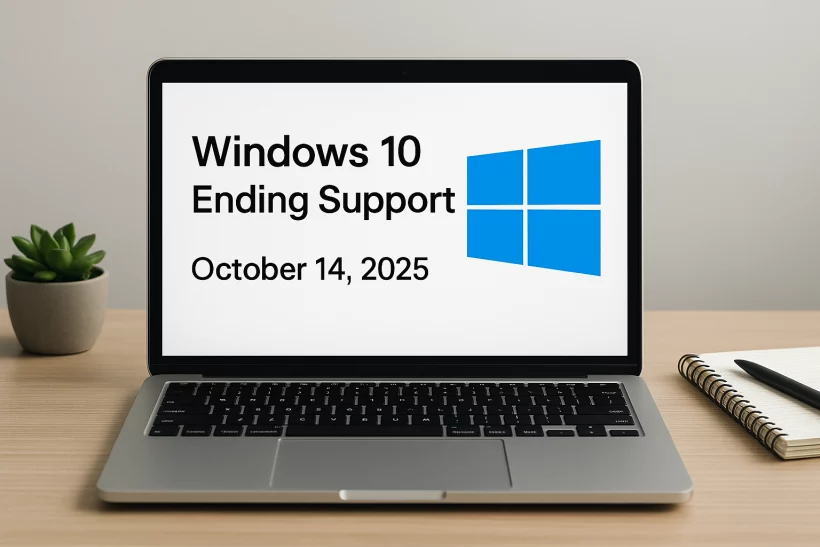Microsoft has confirmed that Windows 10 will officially reach the end of support on October 14, 2025. From that date forward, the company will stop releasing updates and providing customer assistance for this operating system. While Windows 10 will continue to run on existing devices, the lack of support introduces real risks for everyday users and businesses.
What End of Support Actually Means
When Microsoft ends support, several key services come to a stop:
No security updates – new threats and vulnerabilities will remain unpatched.
No feature updates – there will be no improvements or refinements to the system.
No direct technical help – Microsoft will no longer provide assistance for issues that appear after October 2025.
In short, your PC will not suddenly stop working, but it will become more vulnerable over time.
Who Is Affected
All editions of Windows 10 Home and Pro are included in this change. The final release, version 22H2, will remain the last supported build. Anyone still running older versions should already have upgraded to 22H2 to stay eligible for extended support options.
Your Options Moving Forward
Upgrade to Windows 11
If your computer meets the system requirements, this is the most straightforward path. Many devices can upgrade for free, ensuring long-term support and modern features.Purchase a new PC
If your hardware is not compatible with Windows 11, a new machine may be necessary. Modern PCs come with stronger security protections, better efficiency, and longer lifespans.Extended Security Updates (ESU)
For those who need more time, Microsoft offers an ESU program. This provides critical security patches for Windows 10 version 22H2 even after October 2025. However, it does not include new features or general improvements, and it may come with additional costs.
How to Prepare:
Check your PC’s eligibility for Windows 11 through the Windows Update settings.
Back up your data to make migration smoother.
Verify application compatibility so essential programs continue to run after upgrading.
Plan ahead if you decide to use ESU, as it is intended only as a temporary solution.
Risks of Staying on Windows 10 Without Support
Remaining on Windows 10 after October 2025 without ESU introduces serious risks:
Increased exposure to malware and cyberattacks.
Reduced compatibility with new software and apps.
Potential compliance issues for businesses that must meet security standards.








